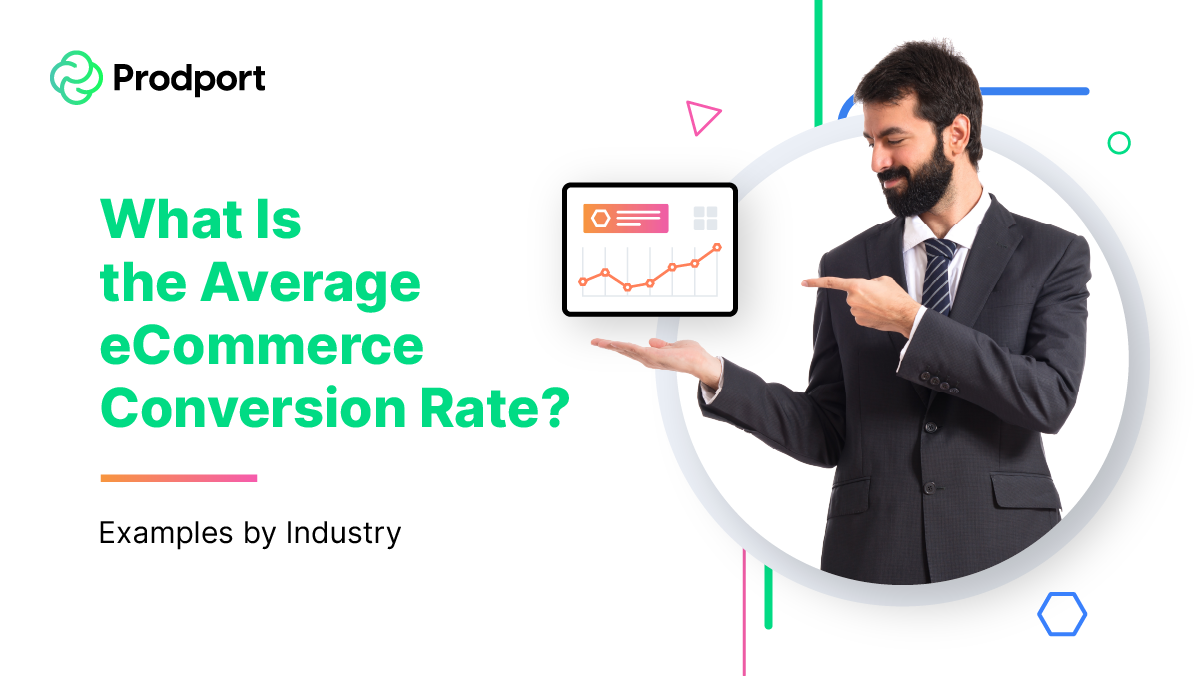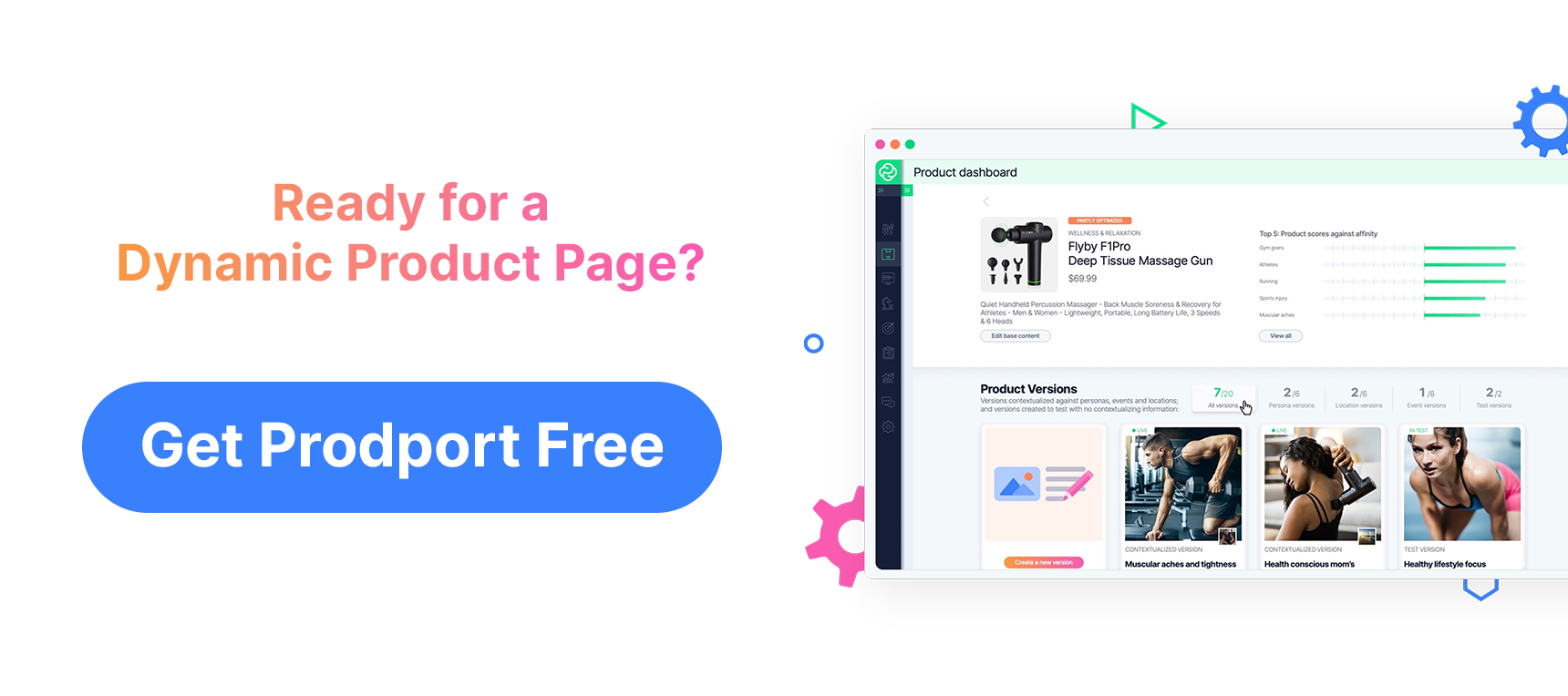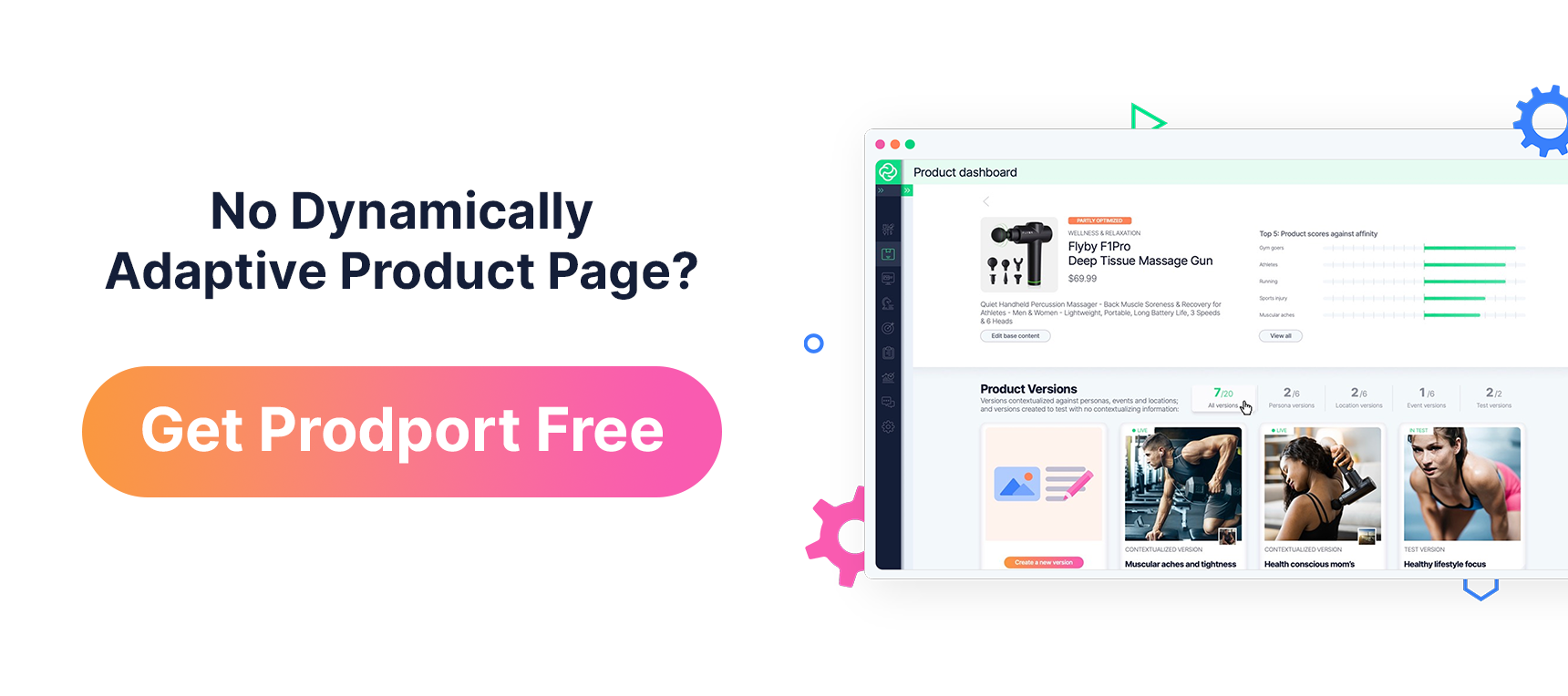If there’s one thing you need to know In the world of business, and especially eCommerce, it’s that conversion is king. Conversions keep companies in the green, warehouses stocked, and employees…well, employed.
But if you want your company to grow and not just stagnate, you need to know a few other conversion-related pieces of information. And specifically, they are:
- What is the eCommerce product page conversion rate?
- How do you calculate conversion rate?
- What is your industry’s average and good product page conversion rate?
- How do you boost your company’s conversion rate?
And wouldn’t you believe it? That’s exactly what we’ll be discussing in this article. So, let’s start with the simple things first.
What Is eCommerce Product Page Conversion Rate?
In the most general sense, a conversion can be any desirable action a customer takes. What you consider a conversion depends on several factors, including your company goals and channel use case (ex., product page, ad, sign-up page. etc.).
Common examples of conversion include:
- a purchase (our favorite conversion)
- a product added to the cart,
- an added item to the wishlist,
- an email sign-up,
- social media share.
However, since we’re discussing average product page conversion rates in this article, we’ll stick to the most common meaning of a sale/purchase going forward.
How Do You Calculate Conversion Rate?
Rather simply, actually! All you need to do to calculate your eCommerce product page conversion rate is divide the number of your conversions by page visitors, so even those most mathematically challenged of us can manage it. Here’s the formula:
Conversions/N° of Visitors= Conversion Rate
Say your focus product page gets 10,000 visitors per month and 100 of those people click your “Buy Now” CTA. That means your monthly conversion rate is 1%. Mind you, that doesn’t mean 100 people actually completed the purchase – just that they got into your on-page shopping cart.
What Is the Average & Good Product Page Conversion Rate?
Great, now we’re ready to start benchmarking. Generally speaking, the average eCommerce product page conversion rate is around 2% – 3%. Anything below that means something’s terribly wrong with your page’s CRO (Conversion Rate Optimization), while anything above means you outperform most of the eCommerce world.
However, those are only estimates based on long-held best practices. In actuality, the latest survey from 2023 suggested the global conversion rate to be 3.68%. Meanwhile, the average conversion rate in eCommerce stood at 1.64% in February 2023.
But that still doesn’t quite capture the full scope of the story. Conversion rates can vary wildly across industries for numerous reasons, including the type of customer (B2B / B2C), product type, whether it’s a one-time or repeat purchase, seasonality, and more.
And so, in the following section, we’ll shed some light on the nitty and gritty details of some of the most popular eCommerce niches, explore their specific conversion rates, and explain what makes them tick. All to help you outperform your competition and achieve the best results possible.
Average Product Page Conversion Rates by Industry
If you didn’t quite believe us in the previous section that even your industry alone makes a big difference in average conversion rates, here’s some intel courtesy of Statista. As you can clearly see, the divide between Food & Beverage and Home Furniture is staggering. But why? Well, let’s answer that.
Food & Beverage Average Product Page Conversion Rate
Sitting pretty at the top of the list with the highest conversion rate is the food & beverage industry, and good for a reason. We, as humans, need both to survive, so they naturally lend themselves well to frequent repeat purchases.
Furthermore, thanks to years of dietary revolutions and people becoming increasingly conscious of what they put in their bodies, companies providing quality food and ingredients build up strong brand loyalty.
This product type is also not something most tend to research and deliberate over too much. Are you out of food in your fridge? Buy more! The convenience of online produce shopping, ready-made meals, and meal kits only serves to solidify this niche’s position at the top.
Haircare, Health & Beauty Average Product Page Conversion Rate
Similar to food and beverages (though not as high on Maslow’s pyramid), health and beauty products are ones we use and consume on a daily basis. And just like before, this leads to more frequent purchases and loyalty to our favorite brands.
The reason why this grouping of products lands lower on the average eCommerce conversion rate ranking is due to the longer consumption time and slightly more effort required to choose the right one for us.
Apparel & Footwear Average Product Page Conversion Rate
Moving further down the list, we arrive at products people buy on average every few months. This field still enjoys a lot of brand loyalty but requires you to stand out from your contemporaries more than the previous niches.
People do a lot of research before opting for a particular shoe or piece of clothing. Your product pages need to offer dazzling visuals and compelling copy to convert. This is also the field where personalizing to your target customer becomes more important than ever.
We showcase how that works on our Demo Page here, so check it out for more ideas.
Despite the lower conversion rates, footwear and apparel tend to come with a higher price tag per piece, which helps balance out the difference.
Home Appliances, Dining, & Furniture. Average Product Page Conversion Rate
Finally, we reach the bottom of the rankings. All the niches in this grouping are ones a person buys at most a few times a year but, more realistically, once every few years. Brand loyalty holds very little value here. It’s design, comfort, features, and price above all else.
To make the most of your product pages, you’ll need to incorporate these values into them effectively. Again, thankfully the comparably low conversion rates and infrequent purchases are outweighed by higher associated price points.
The Final Step: Improving Your Company’s Product Page Conversion Rate
We’ve spoken about averages at length today, but there’s one uncomfortable truth we’ve failed to mention until now. You see, “average” is the mortal enemy of excellence. If you want to outperform your competition and really succeed, sticking to the middle won’t cut it.
In our last article, we gave you 10 Guaranteed Ways to Boost Your eCommerce Product Page Conversion Rates, covering everything from optimizing page speed, split-testing different product page versions for the results, and getting more people to see them with targeted and re-targeted ads.
However, there are a couple of strategies we left out of that article that’ll help you achieve even higher results. Don’t worry; we value your time, so we’ll keep the theory short.
How to Rise Above Average with Product Page Optimization:
- Track the Most Meaningful Metrics: Yes, conversion rates, avg. time spent on site and bounce rates are important, but that’s not what we’re talking about. You see, if you want to outperform your competition, you need to identify the aspects of your product page that are holding you back the most.
And outside of poor load speeds and unattractive design, these most often come down to poor demographic personalization. Pay close attention to what devices are used in your most valuable sales, where they’re coming from geographically, at what time of the day, week, or year, and from who.
Shopify Analytics is a good place to start, but it won’t show you the whole truth. Prodport can help you get the most out of every product page by gleaning insights from comprehensive data analysis.
- Create a Product Page Strategy: Now that you have a better understanding of what makes your product pages tick, it’s time to develop a strategy that’ll help you fix the pages where customers fall through the shopping basket the most and double down on your best performers.
Focus on each product page in a vacuum. Consider what aspects of it promote sales and which ones detract from them. Don’t be afraid to dig deep and come up with a plan consisting of multiple product page alternatives to capture the attention of individual user personas.
- Personalize for Maximum Purchase: Every Joe Schmoe does static personalization nowadays. But as we said, you don’t want to be the average “everyone”. And that’s where dynamic product page personalization comes in. Prodport allows you to implement photos, videos, headlines, product descriptions, and reviews that reflect the viewer’s search intent without any coding necessary.
Our solution pinpoints the lead’s position in their buyer’s journey, automatically adapts to your product page’s layout, and swaps in AI and user-generated content the customer is most likely to respond to, resulting in up to 70% higher conversion rates and 20x ROI for our customers.
Add to this your knowledge of your target personas, and you can create tailor-made product pages right for every use case.
In closing, there’s no “right” way to approach eCommerce product page conversion rates in any one industry. But with the information contained in this article, you’ll be able to calculate your CVR, gauge how you stack up against the rest of your industry, and take action to outperform them and yourself at the same time.


